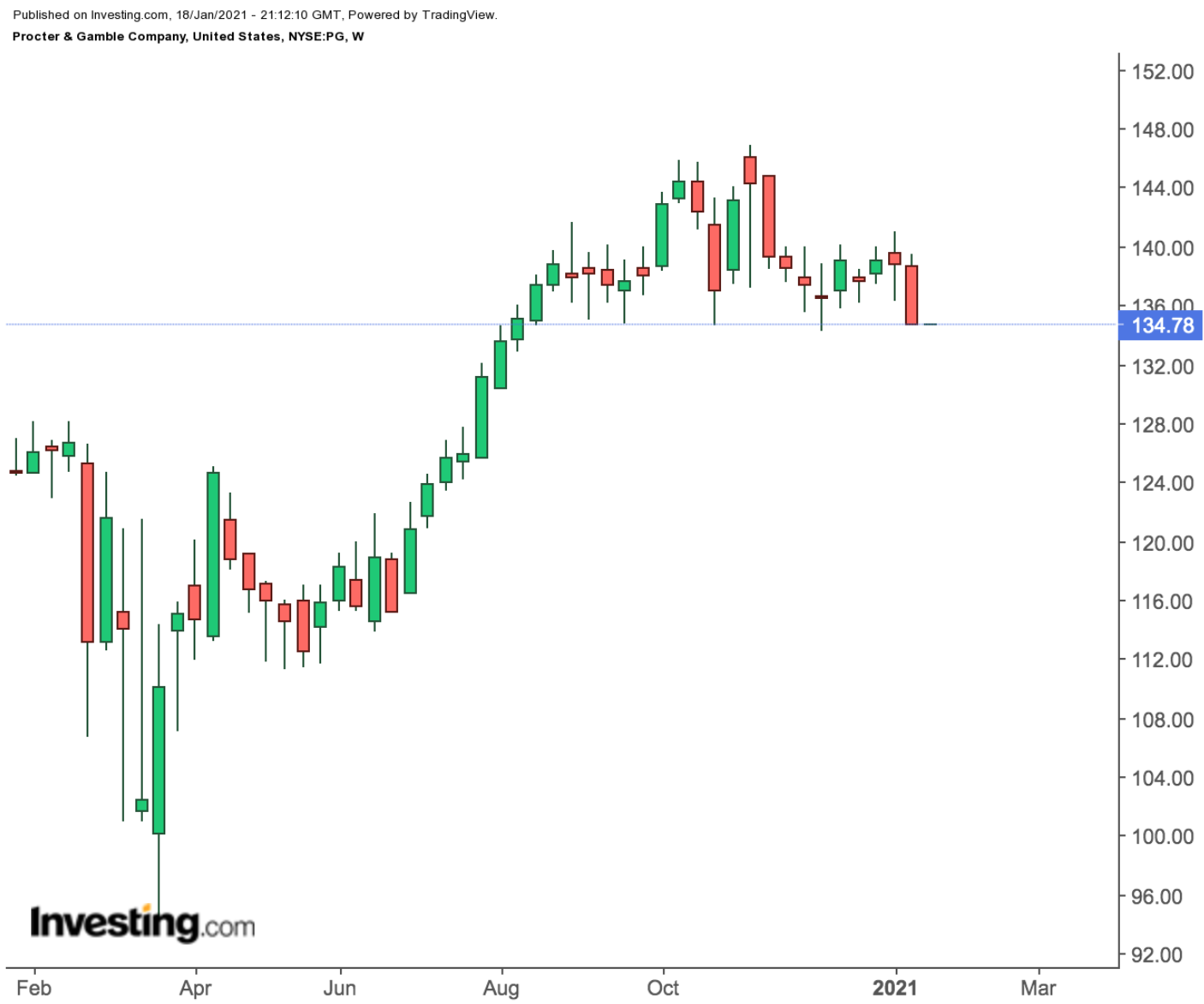* Reports Q4 2020 results before the market opens Wednesday, Jan. 20,
* Revenue Expectation: $19.18 billion
* EPS Expectation: $1.5
Procter & Gamble (NYSE:PG) is one of those global brands that's thriving in the COVID-19 pandemic. The maker of Tide detergent and Charmin toilet paper registered its best sales growth in recent years amid a boom in at-home consumption of cleaning supplies.
When the global consumer staples giant reports its latest earnings on Wednesday, investors will be keen to see the continuation of that trend. With the second coronavirus wave at its peak, indications are that consumers are sticking with their pantry-loading habits, buying items like disinfectants, packaged food and toilet paper.
P&G is again expected to report strong growth in sales that should show expansion of more than 5% in the quarter that ended Dec. 31. Profit per share is forecast to rise to $1.5 from $1.42 during the same period a year ago.
This robust performance has helped PG stock to rebound strongly from its March dip, and provide investors with the kind of stable gains they expect from safe-haven consumer stocks. But that rally is showing some signs of peaking with its stock down about 6% during the past three months. It closed at $134.78 on Friday, after surging 44% from the March dip.

During the past three years, P&G—whose other brands include many household names such as Dawn dishwashing soap, Crest toothpaste and Gillette razors—has been consistently boosting sales, helped by its innovation, marketing and a simplified organizational structure.
Lofty Valuations?
With this impressive run of quarterly sales, one concern is how long a consumer company can deliver an above-average performance?
These concerns have made some investors question P&G’s lofty valuations and its potential to provide further upside after such a fast and powerful rally in 2020. Today, P&G trades at 26 times forward earnings, well above its 10-year average of 19.3 times and the highest multiple since the late 1990s, according to FactSet.
Cincinnati-based P&G management believes that some of these COVID-19 era habits will stick, providing a long-term lift to the company.
As P&G Chief Financial Officer Jon Moeller said on a conference call with analysts in October:
“We do expect that there is some stickiness to new habits that are being formed. It’s hard for us to see in our interactions with consumers that we’re going to snap back and revert to the same attitudes and the same behavior that we had collectively pre-COVID.”
Other positive development for P&G is that sales at its grooming segment are also coming back after a few dull quarters. In Q3, sales of these products grew the most since 2016, buoyed by higher demand for shaving and styling products and higher prices. According to Moeller, new launches under the Gillette brand aimed at beard maintenance and sensitive-skin treatments have allowed the company to keep men engaged, even if they’re not shaving.
Bottom Line
The pace of growth that P&G is showing is unusual for a company that produces everyday consumables in categories where the competition is intense and margins are low. It wouldn’t be fair to expect a blow-out quarter every time from a big consumer staple giant like P&G.
That said, P&G stock remains our favorite pick among the packaged consumer goods companies. It's one of the largest dividend payers in the U.S.—distributing a $0.79-per-share quarterly dividend for a yield of 2.3%—with a track-record that's hard to match.
